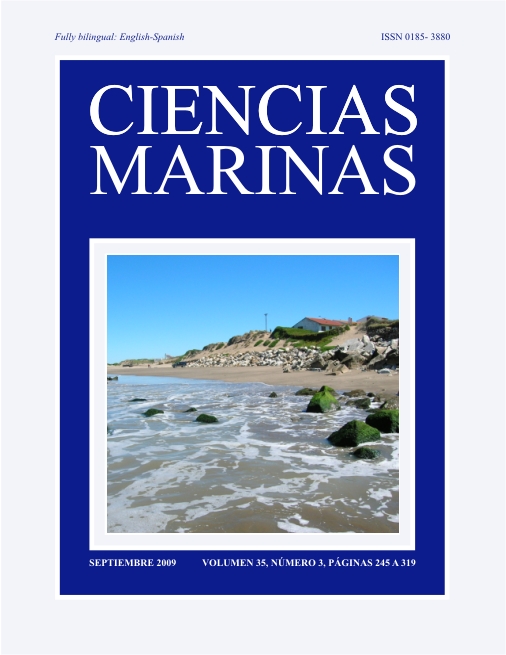Blue shrimp (Litopenaeus stylirostris) catch quotas as a management tool in the Upper Gulf of California
Main Article Content
Abstract
Within the buffer zone of the Upper Gulf of California and Colorado River Delta Biosphere Reserve (established June 1993), the shrimp fishery is managed as a common and rational use resource, trying to minize the impact of fishing effort on both the resource and ecosystem. An analysis was thus made of potential catch quotas of Litopenaeus stylirostris using a dynamic model to estimate expected shrimp yield and future biomass that includes fishing season as a factor and catch per unit effort (CPUE) as abundance index. The CPUE of L. stylirostris declined in the 1990/91 season and tended to recover in 1995/96. The parameters of the biomass dynamic model were K = 21,323 t (±700 t, P < 0.05) and r = 1.18 (±0.1, P < 0.05). The estimated catchability was 0.00032 with a standard deviation of 0.25. Biomass was projected under three catch quota scenarios in the study area. Given the usefulness of establishing an annual catch limit for available biomass in the management of this resource, based on the scenarios analyzed, the adoption of quotas of 2200 and 2400 t for one fishing season is recommended, after which the effectiveness of this strategy should be assessed.
Downloads
Article Details
This is an open access article distributed under a Creative Commons Attribution 4.0 License, which allows you to share and adapt the work, as long as you give appropriate credit to the original author(s) and the source, provide a link to the Creative Commons license, and indicate if changes were made. Figures, tables and other elements in the article are included in the article’s CC BY 4.0 license, unless otherwise indicated. The journal title is protected by copyrights and not subject to this license. Full license deed can be viewed here.

